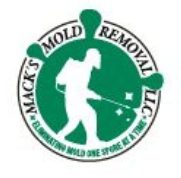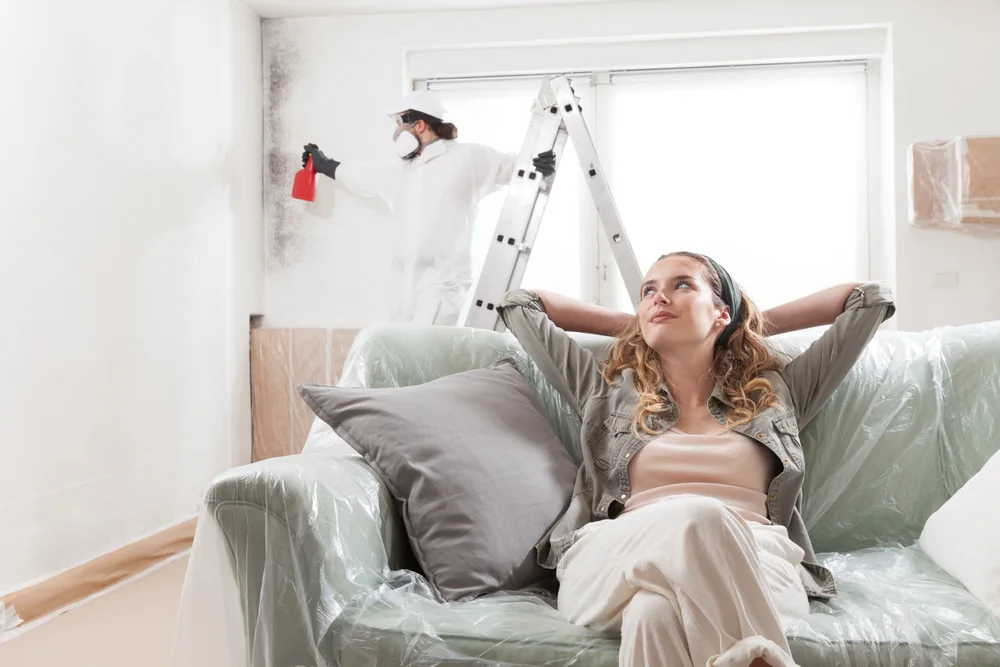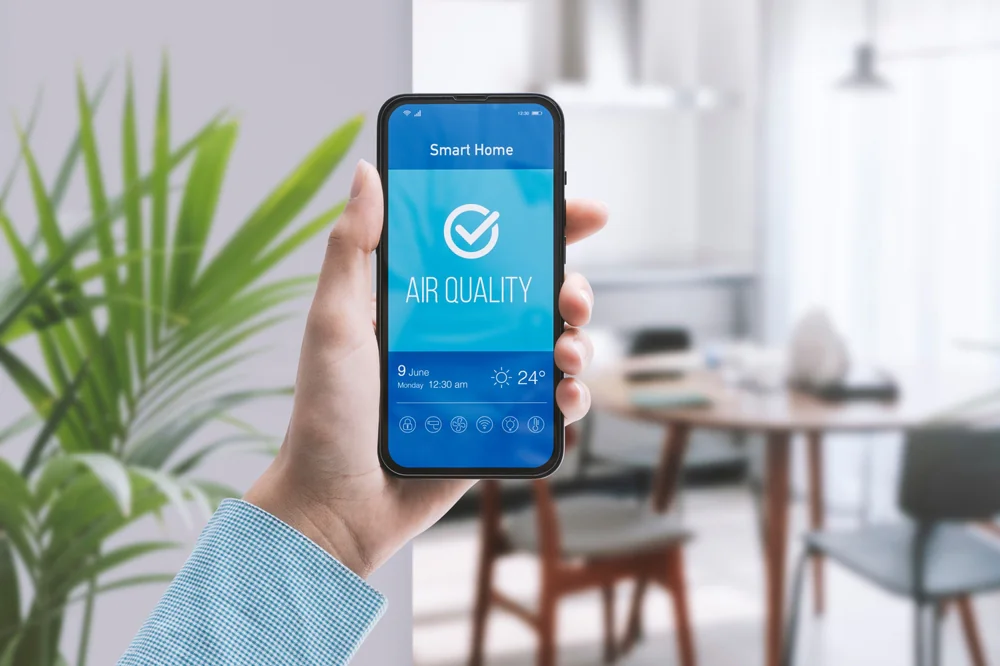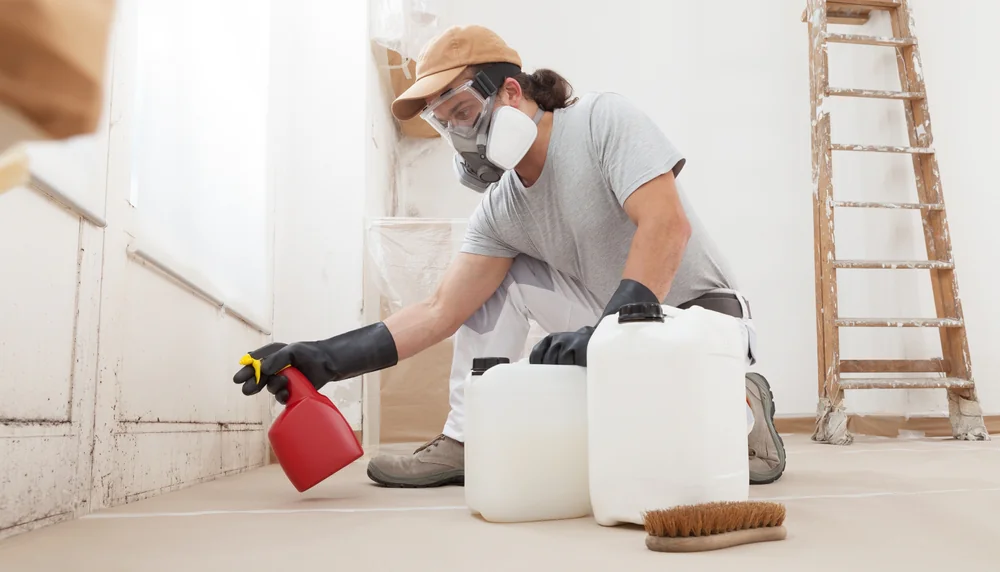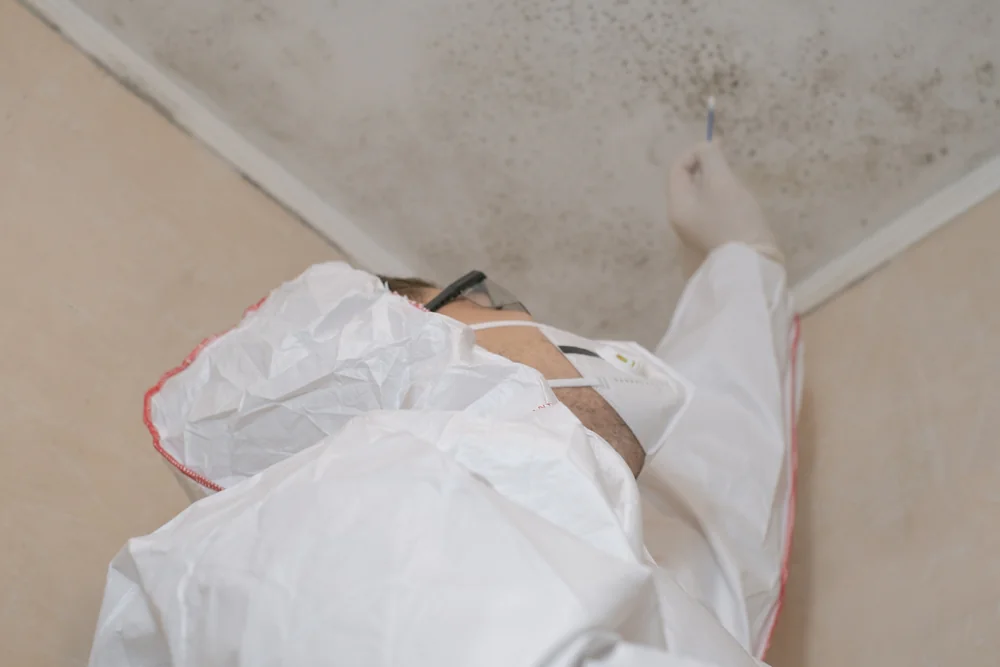Summary:
The Hidden Dangers of DIY Mold Removal
When you disturb mold without proper equipment, you’re essentially creating a spore explosion throughout your home. Those microscopic particles become airborne and settle in places where mold wasn’t growing before.
Without professional containment, you’re not solving the problem—you’re multiplying it. The musty smell that seemed contained to one room? Now it’s in your HVAC system, spreading to every corner of your house. What started as a small bathroom issue becomes a whole-home contamination.
Your family’s health is at stake too. Every breath during DIY cleanup exposes you to allergens and irritants that can trigger asthma attacks, respiratory problems, and allergic reactions that persist long after you think the job is done.
Why One Small Mistake Spreads Mold Everywhere
Mold spores are incredibly resilient and designed by nature to spread. When you scrub that visible patch without proper containment, you’re doing exactly what mold wants—helping it colonize new areas.
Think about it: every time you wipe, scrape, or spray, thousands of spores become airborne. Without negative air pressure and HEPA filtration, those spores drift through your house via air currents, landing on furniture, carpets, and inside wall cavities where they’re impossible to reach with household cleaners.
We use specialized containment barriers and air scrubbers specifically to prevent this cross-contamination. We create negative pressure zones that keep spores from escaping the work area. Without this equipment, your DIY efforts often result in mold problems in rooms that were previously clean.
The worst part? You might not realize the spread has happened until weeks or months later when new growth appears in unexpected places. By then, what could have been a localized professional remediation has become a whole-house problem costing thousands more to address properly.
Even if you wear a basic dust mask and gloves, you’re not protected from the health risks. Professional-grade respiratory equipment and full-body protective suits exist for a reason—standard hardware store masks simply aren’t designed to filter out microscopic mold spores effectively.
Health Risks You Can't See Coming
The health effects of mold exposure don’t always show up immediately. You might feel fine during your DIY cleanup, but respiratory irritation, chronic fatigue, and worsening allergies can develop over time as spores continue circulating through your home’s air system.
Children and elderly family members face the highest risk. Their immune systems struggle more with mold exposure, and symptoms can be severe. Asthma attacks become more frequent. Sinus infections won’t clear up. Sleep quality deteriorates because of nighttime congestion and coughing.
Some types of mold produce mycotoxins—toxic compounds that can cause neurological symptoms, chronic fatigue, and even lung bleeding in severe cases. Without proper testing, you have no way of knowing whether you’re dealing with relatively harmless surface mold or dangerous species like Stachybotrys (black mold).
Professional mold remediation starts with testing to identify exactly what you’re dealing with. Different mold species require different removal approaches, and some demand extreme caution during handling. We can tell you whether that dark patch is cosmetic mildew or something that requires full protective gear and specialized removal techniques.
The financial cost of ongoing health problems often exceeds professional remediation costs. Doctor visits, medications, and time off work add up quickly. Meanwhile, the mold problem continues growing because DIY methods rarely address the underlying moisture source.
Your homeowner’s insurance might cover professional mold remediation if it results from a covered water damage event. But if you attempt DIY removal first and make the problem worse, you could void that coverage and end up paying for everything out of pocket.
Want live answers?
Connect with a Mack's Mold Removal expert for fast, friendly support.
What Professional Mold Remediation Actually Involves
Professional mold remediation is far more complex than cleaning visible growth. It’s a systematic process that addresses the entire contamination, prevents spread, and eliminates the conditions that allowed mold to thrive in the first place.
The process starts with thorough inspection using moisture meters, thermal imaging, and air quality testing. We locate all affected areas, including hidden growth behind walls, under flooring, and in HVAC systems that you’d never find on your own.
Proper containment comes next—physical barriers and negative air pressure systems that prevent spores from spreading during removal. Only then does the actual cleaning begin, using specialized antimicrobial treatments and HEPA-filtered equipment designed specifically for mold remediation.
Advanced Equipment You Can't Buy at Home Depot
Professional mold remediation requires equipment that costs thousands of dollars and needs training to operate safely. HEPA air scrubbers create negative pressure zones while filtering microscopic particles from the air. Commercial-grade dehumidifiers control moisture levels during and after remediation.
Thermal imaging cameras detect moisture problems inside walls and ceilings without destructive testing. Moisture meters provide precise readings that determine whether materials can be saved or need replacement. Antimicrobial fogging equipment treats large areas thoroughly and reaches places manual cleaning can’t access.
Professional-grade protective equipment goes far beyond basic masks and gloves. Full-body suits, powered air-purifying respirators, and eye protection designed specifically for mold work protect technicians from exposure during intensive remediation work.
The laboratory testing component is equally important. Surface samples and air quality measurements before, during, and after remediation provide objective data about the success of treatment. You’ll know definitively whether the problem has been eliminated or if additional work is needed.
This equipment represents a significant investment that only makes sense for companies performing mold remediation regularly. Attempting to rent or buy similar equipment for a single DIY project would cost more than hiring professionals, and you’d lack the training to use it effectively.
Most importantly, we know how to interpret the results from this equipment. Moisture readings, air quality data, and visual inspection findings combine to create a complete picture of your mold problem and the most effective solution.
Addressing Root Causes, Not Just Symptoms
The biggest difference between DIY and professional mold remediation is addressing why mold grew in the first place. Cleaning visible growth is just treating the symptom—if you don’t fix the underlying moisture problem, mold will return within weeks or months.
Professional remediation includes moisture source identification and correction recommendations. That might mean fixing plumbing leaks, improving ventilation, addressing drainage problems, or installing dehumidification systems. Without these repairs, any cleaning effort is temporary.
We also understand building science and how moisture moves through structures. We can identify problems like thermal bridging, vapor barriers, and ventilation issues that create conditions favorable to mold growth. These aren’t obvious to homeowners but are critical for preventing recurrence.
The remediation process itself must be coordinated with necessary repairs. Sometimes structural materials need replacement, and the sequence of repairs, drying, and final cleaning matters for success. We coordinate with contractors, plumbers, and other specialists to ensure work is completed in the right order.
Documentation is another crucial element. Professional remediation includes detailed reports showing what was found, what was done, and verification that the work was successful. This documentation protects your property value and provides proof of proper remediation if you sell your home.
Insurance companies often require professional documentation for claims involving mold damage. DIY cleanup typically voids coverage because there’s no way to verify that the work was completed properly or that the problem won’t recur.
Protecting Your Bucks County, PA Home's Value and Your Family's Health
Mold problems don’t improve on their own, and DIY attempts often make them worse while putting your family at risk. Professional mold remediation might seem like a bigger upfront investment, but it’s actually the most cost-effective approach when you consider the alternatives.
Your home’s value, your family’s health, and your peace of mind are worth protecting properly. Professional remediation ensures the job is done right the first time, with warranties and documentation that give you confidence the problem is truly solved.
When you’re ready to address mold problems the right way, Mack’s Mold Removal has the expertise, equipment, and experience to restore your home safely and completely.
